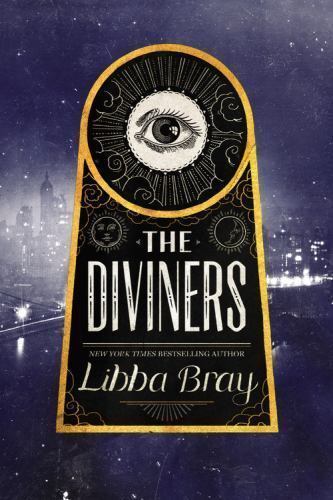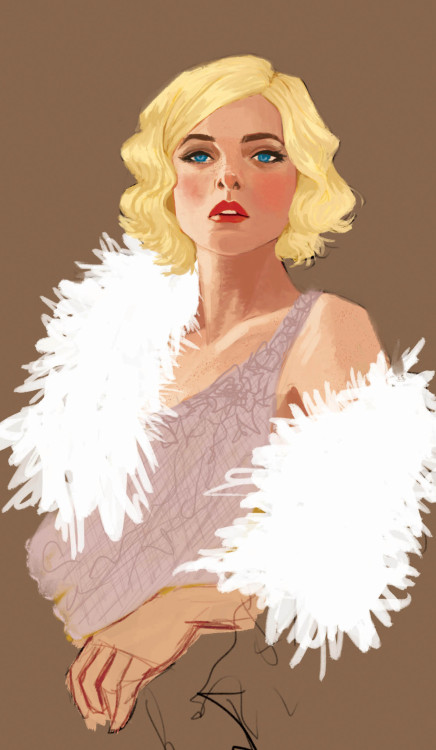 Yes, it’s the ’20s again! Except unlike the last round of years ending in 20-something, there’s not much “roaring” about our decade so far (I like to joke that it’s more like we’re starting this decade in 1929—dancing on the edge of economic collapse). I’m not usually a fan of head-in-the-sand coping tactics, but I’d be lying if I said I’m not enjoying everyone’s determination to recreate—albeit quite sadly—the golden lustre of 100 years ago. How many 1920s-themed New Years parties did you hear about, or possibly attend? Like that one meme says, “My inner Jay Gatsby is about to pop off. Might fuck around and throw parties for an unrequited love. Might die in a pool. Who knows. It’s the 20s, bby.” The cult of Gatsby is alive and well, and we are determined to have a good time (let’s just ignore the actual themes of the book for the time being). A century later and we’re still seduced by the glamour of flappers and jazz and illicit rumrunners.
Yes, it’s the ’20s again! Except unlike the last round of years ending in 20-something, there’s not much “roaring” about our decade so far (I like to joke that it’s more like we’re starting this decade in 1929—dancing on the edge of economic collapse). I’m not usually a fan of head-in-the-sand coping tactics, but I’d be lying if I said I’m not enjoying everyone’s determination to recreate—albeit quite sadly—the golden lustre of 100 years ago. How many 1920s-themed New Years parties did you hear about, or possibly attend? Like that one meme says, “My inner Jay Gatsby is about to pop off. Might fuck around and throw parties for an unrequited love. Might die in a pool. Who knows. It’s the 20s, bby.” The cult of Gatsby is alive and well, and we are determined to have a good time (let’s just ignore the actual themes of the book for the time being). A century later and we’re still seduced by the glamour of flappers and jazz and illicit rumrunners.
If you’re a fan of that Great Gatsby vibe, let me call your attention to a criminally underrated book series, whose final installment The King of Crows hit shelves this past February. It’s called The Diviners by Libba Bray. Every time one of these books drops, it periodically consumes my life. Each one is roughly 500 pages long, and packed to the brim with everything a reader could ask for: 1920s New York, magic powers, ghosts, ridiculous Jazz Age lingo, wild parties, social commentary, even more ghosts, and all the POC and LGBTQ+ representation your heart desires. (Every time I tell someone what these books are about, I feel like Stefon from SNL. “This club has everything…”) Our main girl is Evie O’Neill, the “Sweetheart Seer”; a Midwestern transplant turned New York “Jazz Baby”, who makes a name for herself as a radio psychic. Her new friend Theta Knight is a chorus girl, dancing for the Ziegfeld Follies, while her will-they-won’t-they love interest Sam Lloyd is a charming pickpocket from a Russian Jewish family. Memphis Campbell is a Harlem poet caught up in bookkeeping for the menacing crime bosses of the neighbourhood nightclubs. Ling Chan is the dutiful daughter of Chinese and Irish immigrants, crippled by an illness but no less strong for it. And Henry Dubois IV is a New Orleans runaway, a talented musician at the Follies who escaped his old money home after his father found love letters from another boy in his pocket. This colourful cast of characters fills out the alluring hodge-podge personality of New York, but the best part of all? They all have their own unique powers, coming together under the umbrella term “Diviners” to fight evil, like early 20th century Avengers. The evil in question is the titular King of Crows, a menacing figure from the underworld looking to use Diviners to open a portal between his world and ours. Or something. It’s complicated.
 Honestly, the evil menace might be the least interesting part of these books. Author Libba Bray has probably done more research for this series than I’ve done for my undergrad and graduate degrees combined. Okay, I’m being hyperbolic, but the meticulous attention to period-specific detail is absolutely stunning. She’s at her best when crafting the witty 1920s dialogue of her characters, whether it’s Evie’s buoyant prattle (“Harold Brodie is a louse and a lothario who cheats at cards and has a different girl in his rumble seat every week. That coupe of his is pos-i–tute-ly a petting palace.”) or Theta’s femme fatale mystique (“Theta blew out another plume of cigarette smoke. ‘Not interested. Love’s messy, kiddo. Let those other girls get moony-eyed and goofy. Me? I got plans.’”). Everyone talks like a snappy film character, but they’re not shallow; the wittiness masks the fragility and vulnerability underneath, which Bray pays as much homage to as their brassy performative selves.
Honestly, the evil menace might be the least interesting part of these books. Author Libba Bray has probably done more research for this series than I’ve done for my undergrad and graduate degrees combined. Okay, I’m being hyperbolic, but the meticulous attention to period-specific detail is absolutely stunning. She’s at her best when crafting the witty 1920s dialogue of her characters, whether it’s Evie’s buoyant prattle (“Harold Brodie is a louse and a lothario who cheats at cards and has a different girl in his rumble seat every week. That coupe of his is pos-i–tute-ly a petting palace.”) or Theta’s femme fatale mystique (“Theta blew out another plume of cigarette smoke. ‘Not interested. Love’s messy, kiddo. Let those other girls get moony-eyed and goofy. Me? I got plans.’”). Everyone talks like a snappy film character, but they’re not shallow; the wittiness masks the fragility and vulnerability underneath, which Bray pays as much homage to as their brassy performative selves.
In fact, Bray’s major accomplishment with this series is her ability to balance the fun, screwball energy we expect of Jazz Age New York with the uglier realities of the day, the ones we tend to tuck away when glamourizing the era. This is where all the research comes in. Turns out, it wasn’t all glitz and glam—no period in history was, and the 20s were a time of exorbitant growth rife with all sorts of backwards thinking. Bray includes all sorts of diversity in her characters, which comes with the responsibility of truthful representation. A good chunk of the villainy comes from the rise of the eugenics movement and the KKK. A portion of The King of Crows takes place in Greenville, Mississippi during the Great Mississippi Flood of 1927, a Hurricane Katrina precursor wherein the levees broke, flooding hundreds of thousands of African Americans from their homes. I bet you can guess what happened at the relief camps. If you guessed “relief supplies were reserved for white people and black people got whatever was left”, ding ding ding! Bray positions Memphis (black) and Henry (white) at the flood to juxtapose their two experiences. She weaves little day-to-day micro-prejudices into her character’s lives, without them being the focal point: Memphis consciously alters his speech to sound “proper”, Henry is careful of the way he walks and talks around strangers, and Ling’s internalized misogyny is questioned when she admits her dislike of Evie—finding Evie’s partying ways unattractive while not thinking the same of Henry.
Non-white lives are not generally a part of the 1920s collective consciousness—unless they fit into the usual flapper/gangster/jazz musician roles. Bray’s exploration of these lives draws an unfortunate parallel to 2020, where much of these prejudices still exist, if not so blatantly (although, one could argue, they are more blatant now than pre-2016). The major plot of the series’ second book, Lair of Dreams, is a “sleeping sickness” brought about by a ghost in dreams (it’s a long story). If a dreamer encounters this ghost, they may not wake up. This sickness begins in Chinatown and quickly sweeps through New York, causing a wave of anti-Chinese (anti-Asian, really) sentiments including threats and boycotts. Sound at all familiar? Ling Chan, whose family owns a Chinese restaurant, faces the brunt of this backlash. Lair of Dreams is from 2015, and the sleeping sickness takes place in the 1920s, but the situation is not all that different from what’s going on right now with the coronavirus.

Evie O’Neill by Nica Galvez
But this all sounds very serious. The best thing about The Diviners is how the problematic societal elements are simply woven into the fabric of the story; they’re not the point, but they’re present. In truth, these books are just a ton of fun. If you’re into spookiness, The Diviners has got it in spades. Seriously, it is chock full of ghosts. While I don’t find the King of Crows as interesting (or as scary) as, say, the serial killer Naughty John from the first book (“Naughty John, Naughty John, does his work with his apron on. Cuts your throat and cuts your bones, sells ‘em off for a coupla stones.”), the ripples of creepiness that radiate from his presence are as effective as ever. Bray has a gift for balancing the horror with flat-out fun, sometimes swirling them both together at once. A particular favourite moment of mine is when the Diviners come together to vanquish a malevolent ghost haunting the New York subway tunnels, and Evie, having come directly from a party, is sloppy drunk the whole time.
I like to pepper the last part of my posts with related links for further reading. Sadly, because everyone keeps sleeping on this series, there’s isn’t nearly as much Diviners content out there as it deserves. But if you’re interested in the series, you can get started with book one! Or if you want a bit more 1920s culture, check out this thorough list of resources (or this bite-size cultural summary). You can also check out an informative interview Libba Bray gave to YALSA, which gives some clues into the origin of her characters. If you’re in the GTA, Toronto has a bunch of cool speakeasies in which you can live out your Prohibition rebel fantasies. Me, I’m just waiting for someone to adapt this series for television. Netflix, let’s go!
I read GODS OF JADE AND SHADOW by Silvia Moreno-Garcia recently, recommended via the NPR end-of-2019 book concierge. It’s also set during the Jazz Age, albeit in Mexico, and draws heavily on Mayan mythology. Picked it up at VPL 😉
Yes!! Thank you for reminding me of Gods of Jade and Shadow. It’s been on my to-read list for a while and fell by the wayside. Looks like Moreno-Garcia has a new crime thriller in the works too which is an interesting departure. Could be fun!